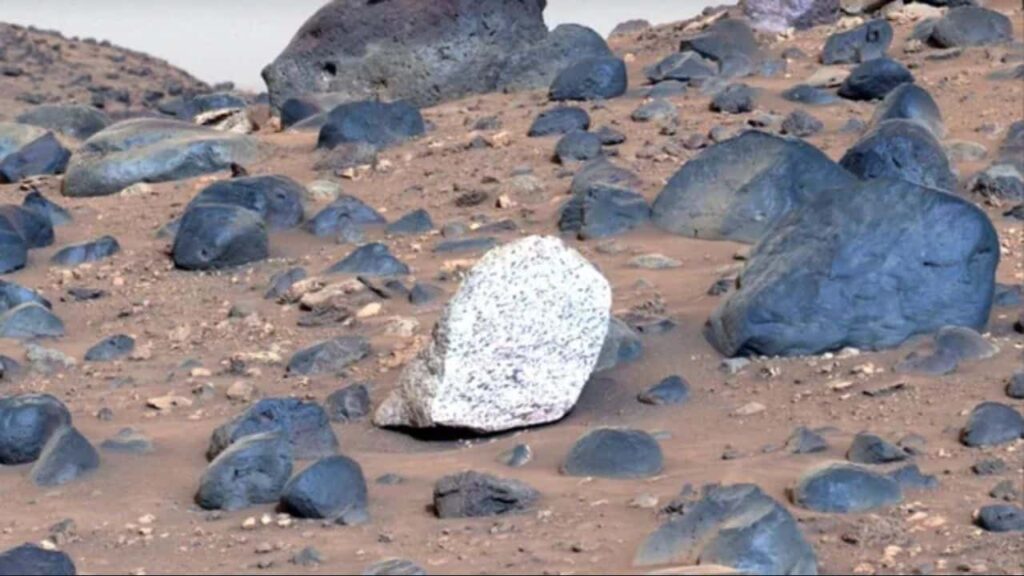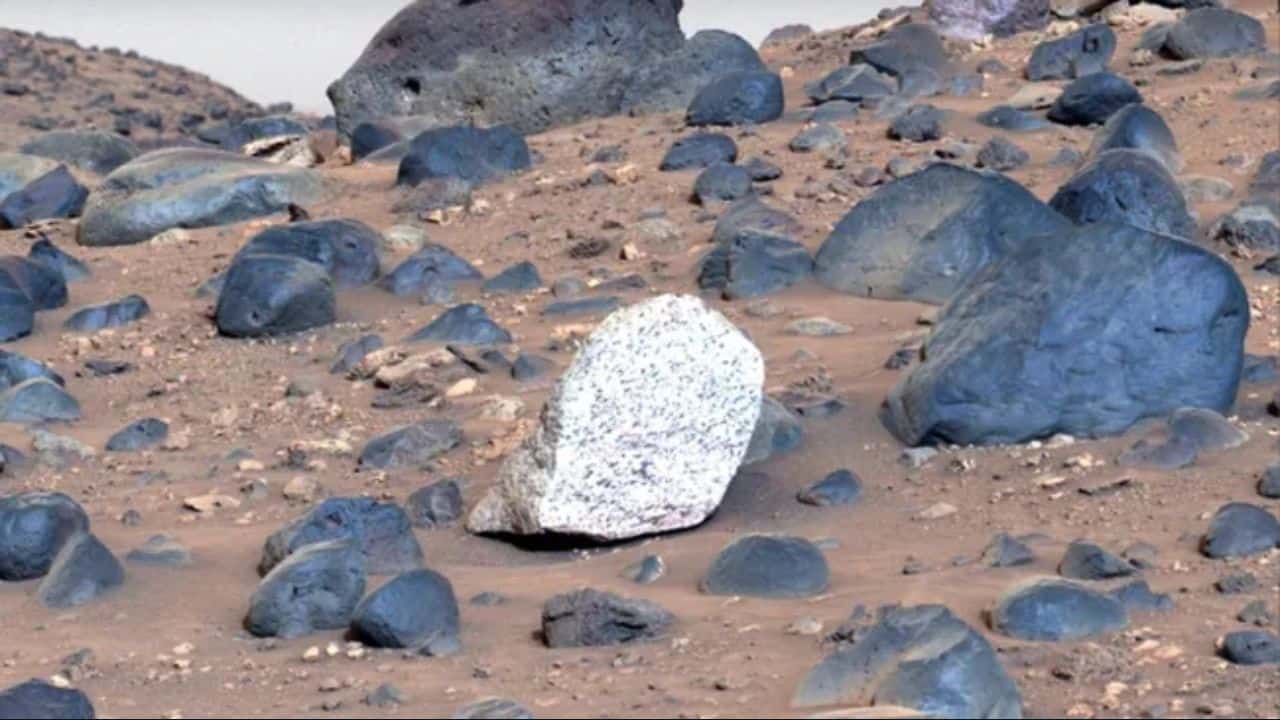NASA, Perseverance rover, Mars discovery, light-colored boulder, Atoko Point, Jezero Crater, Mars geology, ancient Mars, Mars exploration, Mars past, NASA Mars mission
NASA’s Perseverance rover has made a groundbreaking discovery in Jezero Crater on Mars, uncovering an unusually light-colored boulder named Atoko Point. This unique find offers new insights into the Red Planet’s geological and environmental history. Learn more about this significant milestone in Mars exploration and what it reveals about Mars’ ancient past.

NASA’s Perseverance Rover Discovers Unusually Light-Colored Boulder on Mars: A Glimpse into the Red Planet’s Past
NASA’s Perseverance rover has made a groundbreaking discovery in Mars’ Jezero Crater, spotting an unusually light-colored boulder that stands out amidst the darker rocks in the region. This unique find, dubbed “Atoko Point,” may offer new insights into the ancient history of the Red Planet.
The Discovery of Atoko Point
Perseverance, which landed on Mars in February 2021, has been diligently exploring the Jezero Crater—a region believed to have once been an ancient lake. On May 27, the rover captured an 18-image mosaic that included the first glimpse of this bizarrely light-toned boulder. Atoko Point, named after a similarly light-colored feature of the Grand Canyon, measures approximately 18 inches (45 centimeters) wide and 14 inches (35 centimeters) tall.
Using its advanced camera instruments, SuperCam and Mastcam-Z, the rover team identified the rock’s composition as a mix of pyroxene and feldspar. These minerals suggest a complex geological history, potentially involving transportation by an ancient river or formation underground by magma before erosion revealed the boulder.
Geological Significance
The discovery of Atoko Point is particularly exciting for scientists. Brad Garczynski of Western Washington University in Bellingham, co-lead of the current science campaign, remarked on the diversity of textures and compositions at Mount Washburn, where the boulder was found. These rocks represent a collection of geological “gifts” brought down from the crater rim and potentially beyond, offering a unique window into Mars’ geological history.
The presence of such a light-colored boulder amidst darker rocks is unusual and suggests that Mars’ geological processes may be more complex than previously thought. The diversity of rock types and formations in the Jezero Crater area provides valuable clues about the planet’s past, including its climatic and environmental conditions.
Perseverance’s Mission and Objectives
Perseverance’s primary mission is to search for signs of ancient life on Mars. Since its landing, the rover has been collecting geological samples for future study, with 24 samples already collected. The current exploration of Jezero Crater is part of Perseverance’s fourth science campaign, focusing on finding carbonate and olivine minerals along the crater’s rim.
Carbonates are of particular interest to scientists because they form when carbon dioxide reacts with water, typically on the shallow surfaces of freshwater lakes. By analyzing these minerals, researchers can gain insights into Mars’ past carbon dioxide levels, shedding light on the planet’s historical climate. Furthermore, carbonates are excellent at preserving fossils, which could potentially point to traces of ancient life if it ever existed on Mars.
The Journey Through Jezero Crater
Recently, Perseverance has been on a detour from Mount Washburn to reach “Bright Angel,” an area within the Neretva Vallis channel, an ancient river that once flowed into Jezero Crater. This detour is part of the rover’s broader mission to explore various geological features and collect samples that may reveal the planet’s history.
The discovery of Atoko Point during this journey is a significant milestone. As the rover continues its mission, scientists anticipate finding more unique and informative geological formations. The insights gained from these discoveries will enhance our understanding of Mars’ geological and environmental history, potentially paving the way for future missions and even human exploration.
The Broader Implications of the Discovery
The identification of Atoko Point as the first of its kind on Mars highlights the dynamic and varied geological history of the planet. This discovery underscores the importance of continued exploration and study of Mars’ surface. Each new finding adds a piece to the puzzle of Mars’ past, helping scientists construct a more comprehensive picture of the planet’s evolution.
As Perseverance continues its mission, the rover’s findings will not only contribute to our knowledge of Mars but also inform future missions. The potential for discovering signs of ancient life, understanding Mars’ climatic history, and uncovering the processes that shaped its surface are all within reach thanks to the efforts of the Perseverance team.
Conclusion
NASA’s Perseverance rover’s discovery of the unusually light-colored boulder, Atoko Point, is a landmark achievement in the ongoing exploration of Mars. This finding provides a tantalizing glimpse into the Red Planet’s past, offering new clues about its geological and environmental history. As the rover continues its mission, we can expect more groundbreaking discoveries that will enhance our understanding of Mars and its potential to have harbored ancient life.
The exploration of Jezero Crater and the study of unique formations like Atoko Point are crucial steps in unraveling the mysteries of Mars. Each discovery brings us closer to understanding the complex history of our neighboring planet and prepares us for future missions that may one day include human exploration. Perseverance’s journey is a testament to human curiosity and ingenuity, driving us to explore the unknown and expand our horizons.
Read More
- NASA Postpones Spacewalk Outside ISS Due to Spacesuit Discomfort Issue
- Hungry Cheetah OG Official Trailer 2024 :
- Bhakshak Full Movie Bhumi Pednekar :
- NASA Selects Lockheed Martin for $2.27 Billion GeoXO Satellite Program










